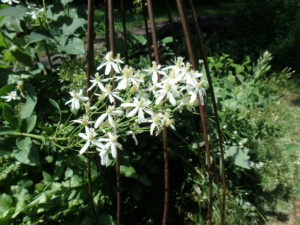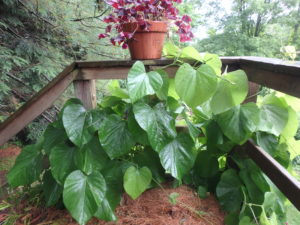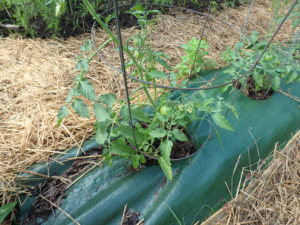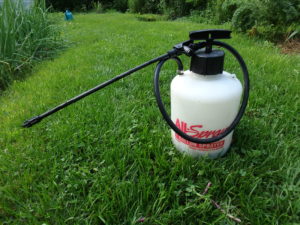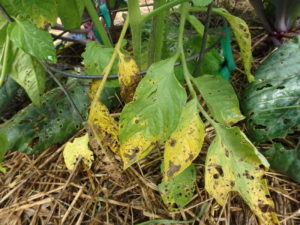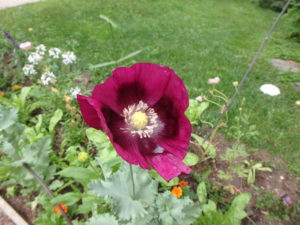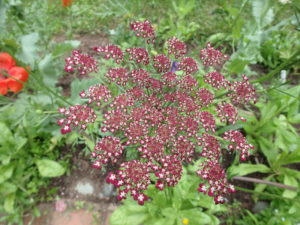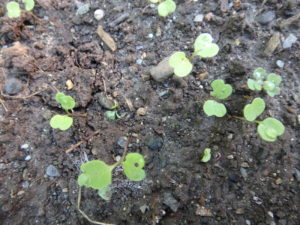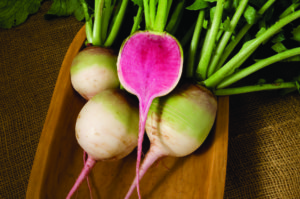Vines Worth Growing
As a boy I was fascinated by the idea that Tarzan the Ape Man could move through the jungle above the forest floor by swinging from vine to vine. I doubt that I ever saw a real Tarzan movie, but my imagination was good. I knew I wanted that ability to swing from vines. Now I just grow them. Let’s look at a few so you can decide if you’d like to plant one this summer.
Wisteria is a vine loved by many, particularly gardeners who have moved to New England from warmer parts of the country where it thrives. For decades, wisteria was a frustration for northern gardeners: it would grow nice green vines, but never blossom. That was because it set buds one summer for blooms the next spring. It bloomed before growing leaves and shoots. Our winters in the North Country killed the buds.
Then two new varieties appeared on the market: ‘Blue Moon’ and ‘Amethyst Falls’. Both are hardy to Zone 4 (minus 30 in winter) and bloom on new shoots that appear each spring. Mine bloom in late June or early July for about 3 weeks. The scent of Amethyst Falls I do not find pleasant (overtones of cat?), but the blossoms are smaller than those on Blue Moon and seem to last longer. I grow it on a cedar trellis that serves as an entrance to my vegetable garden.
The soil for my wisterias is rich, dark, and moist; they will grow anywhere, I think, given at least half a day of sun. The more sun, the more blossoms. I have heard from friends in southern New England that wisteria can be a pest because birds eat the seeds and spread them around, starting them at the edge of the woods. That has not happened for me.
Clematis is another great vine. I have 5 different kinds of clematis, and fully intend to buy another this summer – I just saw a great one while on a recent garden tour. That one, I learned from garden designer Cyndy Fine of Westminster, VT, is a Clematis viticella called ‘Betty Corning’. It blooms most of the summer and into the fall. It is has nodding bell-shaped flowers that are lavender to blue. Hardy to Zone 3 (minus 40 degrees).
The most vigorous, reliable of my clematis in one called Clematis jackmanii. It has nice purple blossoms and grows up wires I have attached to the front of my house. It easily grows 10 to 12-feet tall, and blooms enthusiastically most of July.
Then I have one called Clematis recta. Unlike most of the others, it does not climb up a trellis, but flops on the ground unless supported by something solid – a fence of some sort that can contain it. It blossoms appear in huge clusters of small white blossoms, followed by delicate airy seed heads. It dies back to the ground each winter. But each year it gets bigger and more bodacious.
All clematis want essentially the same thing: hot tops and cool feet. Plant perennials in front of your clematis to shade and cool the roots, but provide plenty of hot sun for the vines. They like rich soil, and plenty of moisture.
Then there is an amazing vine form of hydrangea: Hydrangea anomala ssp. petiolaris. This will attach itself to brick or stone with holdfasts, as opposed to twining vines like wisteria and most clematis. I have it on the north side of my barn as it grows well and blooms without much need for sunshine.
I originally used plastic ties to attach my climbing hydrangea to the barn, as its “feet” won’t grab wood. Now it has sent shoots in between the rough barn boards and it no longer needs support. It sends out “arms” 3 to 4 feet from the barn, each loaded with large white flower panicles that seem to defy gravity. Even in winter it is gorgeous.
Dutchman’s pipe (Aristolochia macrophylla) is another vine I grow that is very adaptable. It will grow in crummy soil in sun to shade, but does not want to be terribly dry. It has huge leaves, and small white blossoms reminiscent of little ivory pipes. Once established, it would be impossible to pull out. I have it growing on the north side of my deck, and it climbs up and tries to twine around potted plants growing on the rail. It completely hides the mess beneath the deck!
As for Tarzan, only wild grapes would do for his exploits. These are pests sometimes in the forest, as they can climb up trees and choke out nice trees. When I see that they are a problem, I cut them off at the base with roots loppers – a quick and easy, but temporary solution. But the birds do love the fruit when it is ripe, so I often do nothing about them.
Henry is the author of 4 gardening books. His web site is www.Gardening-Guy.com. See extra photos for his newspaper articles at https://dailyuv.com/
How to Minimize Tomato Blight
John Denver introduced me to a Guy Clark song called, “Home Grown Tomatoes” with a refrain that goes, “Only two things money can’t buy. That’s true love and homegrown tomatoes”. How true. I love tomatoes.
Growing disease-free tomatoes is nearly impossible. Usually by this time of the year, gardeners see lower leaves turning yellow and getting spots. Stems turn black early on. Some summers, we only get a few fruits, those tomatoes that started early. Other years we get late blight half way through the season and our plants and fruit turn to disgusting black mush.
So what can we do? According to companies that produce seeds, we can choose varieties of tomatoes that are disease resistant. Breeders using old-fashioned breeding techniques have been successful in breeding resistant hybrids. But some say the flavors are not always as good as the old fashioned heirlooms. I grow both kinds.
This year I am growing ‘Brandy Boy’ (a hybrid produced by Burpee Seeds) that is supposed to taste as good as the heirloom Brandywine, one of my favorite heirloom varieties, and have improved disease resistance.
I know I like ‘Defiant’, a medium-sized hybrid with high resistance to late-blight, produced by Johnny’s Seeds. But Defiant does get early blight, which reduces its production. Still, I grow it each year.
This year my tomato plants are beautiful. Only a few leaves on a few plants showed any signs of yellowing leaves by mid-July. Here are a few things I have done to help prevent tomato diseases.
At planting time I mulched my tomatoes with leaves that I collected last fall. Some fungal disease reside in the soil, and when it rains, or when you water, splash-up sends spores onto the tomato leaves, causing disease. Mulching helps minimize splash-up. Grass cuttings are good, too.
This year I got a soil drench from Gardeners Supply Company called “Root Shield”. This is a bacterial powder that I diluted with water and applied to the soil around each tomato. It is approved for use by organic gardeners. The bacteria attacks the pathogenic fungi in the soil, minimizing the chance of them getting on the tomato plants.
The other bacterial fungicide I applied is called “Serenade”, which I also obtained from Gardeners Supply Co. This contains Bacilius subtilis, a broad spectrum bio-fungicide. It is designed to be sprayed on leaves and stems once a week – and before signs of infection are seen. I have sprayed just twice, not keeping up with the schedule, but will. It’s easy to forget about disease when your plants are disease-free. Once plants are infected, both bio-fungicides are not going to solve the problem.
What else can you do? If you have tomato leaves turning brown, cut them off and put in the household trash, not the compost pile. I did this pretty regularly last year, and I think it helped.
If you get late blight – which basically causes a total meltdown of the plants – quickly bag everything in contractor bags and get everything affected out of the garden. Fortunately, late blight does not survive New England winters. But if you do get it, do not overwinter potatoes, or allow ‘volunteer’ potatoes to grow, as they can carry the blight. Tomatoes and potatoes are in the same plant family.
Fungal diseases often require moisture on the leaves so that fungal hyphae (their root-like appendages) can penetrate the leaves. So do not water at dusk. Water in the morning if possible, and try to keep the leaves dry.
I use a watering wand, not an overhead sprinkler. This is a hand-held watering device – a 30-inch long wand with a sprayer on the end – that allows me to deliver water around the roots, but none on the leaves. In a normal summer I rarely water tomatoes – my soil stays lightly moist most of the time just with rain. But if we go a week or so without rain, I do water.
Many tomato plants will grow taller until the fall over or are pruned back. It’s better to cut off tall branches and keep your plants supported by their cages or stakes. Cutting back plants allows them to spend their energy making tomatoes, not stems and leaves.
As a gardener I am always optimistic. I think this year’s crop of tomatoes from my 37 plants will be the best ever. But I’ll be happy with whatever I get.
Read Henry’s twice-weekly blog posts at https://dailyuv.com/
Ten Fabulous Annual Flowers I Love to Grow
I want colorful flowers growing alongside my front walkway every day from May to November, and generally have them. I do so by growing annual flowers. I grow more than 100 species of flowers elsewhere on my property but the vast majority are perennials that only bloom for a few weeks each year.
All plants (and most animals) have a strong need and desire to maintain their genetic lineage. Their “goal” in life is to pass on their DNA to a new generation. Perennial plants and trees can assume that if they don’t have any descendants this year, they can next year. Not so for annuals. If they don’t bloom and produce seeds this summer, their lineage stops. There is no second chance.
So to get continual blooms from your annual flowers, all you have to do is pluck off the flower heads once they start to look bedraggled. That is known as “deadheading.” The flowers seem to ”know” that if the flowers are gone, so are the potential seeds, and they keep on blooming. Here are some of my favorite annuals.
Pansies. These are my early bloomers. I buy field grown pansies and plant them in the walkway or in a whisky barrel in April or May for early color. By now they are lanky and fading, so I will either cut them back hard for fall blooms, or just yank them.
‘Senorita Rosalita’ cleome. This is a Proven Winner trademarked variety, so it cannot be purchased as seed or in 6-packs. It is generally sold in 4-inch pots or larger and costs more than common annuals. Unlike ordinary cleome, ‘Senorita Rosalita’ stays short and compact, has no thorny protuberances on the stems, and does not have a strong noxious scent. And it blooms continuously all summer. It likes full sun and does well in hot, dry locations. ‘Senorita blanca’ is a similar white variety. I grow this each year, often starting plants from seed, though they need at least 12 weeks to get to the size needed to plant outside. Like all the plants on my walkway, these like plenty of direct sunshine. The flowers are cute little round balls of color- magenta, pink, white. The stems dry well, and I often keep their bright blossoms in a dry vase all winter. I hang them upside down until the stems are dry enough to support the flowers.
Brazilian verbena (Verbena bonariensis). This is one of my favorites, and adds height to the display. It has thin stems up to 5 feet tall, but rarely needs staking because the purple blossoms are quite small. If you cut it back as it grows, it will branch nicely, providing more blossoms. The blossoms keep on looking good even after light frost.
Licorice plant (Helichrysum petiolare). This is a foliage plant with no flowers that I’ve ever seen. It stays low and branches nicely with silver-gray or yellow-green foliage. I mainly use it in my window box by the front door, but it also works in the ground. Cut stems are fabulous in a vase, too.
Annual poppies. These are blooming for me right now in various colors: orange, purple, yellow (California poppy) and polka dots. Some are doubles, meaning they have extra petals. Annual poppies are an exception to the rule that annuals keep on blooming all summer, but I don’t care. I love these beauties with their gray or silver foliage and delicate blossoms. Many annual poppies scatter their seeds and will start up next spring on their own.
Scaveola. This plant takes abuse, so I put it in my window box with licorice plant – where drying out is more of a problem than in the ground. It can look dead from dehydration, but a watering brings it right back. Its stems are generally 6 to 12 inches loaded with small purplish-blue flowers.
Gomphrena. A variety of verbena, this comes in purples, magenta, white, pink and more. It creates a cascading mass of bright flowers that bloom all summer.
Zinnias. Fabulous flowers. They come from short (Profusion series are under a foot tall) to tall (Benary’s Giant, 4 feet tall). Keep picking them for vases, and they will branch and produce more flowers. A wide variety of colors, including lime green. I plant these by seed in a bed in my vegetable garden, just scattering last year’s dried flowers over and raking them in.
Wild carrot. (Daucus carota ‘Dara’). One of my new favorites. This looks like Queen Anne’s lace, which is a biennial wild flower, but this is an annual that comes in a variety of colors – white, pink and burgundy. I bought some started plants and they are blooming nicely.
Salvia. There are hundreds of kinds of salvias, both annual and perennial. I grow annual salvias mainly for their vertical form (8 to 24 inches tall spikes) and their intense blue and purple. They also come in fire engine red (which I tend to avoid), white and bi-color. All are tough as nails in hot sun.
I realize it’s hard to find nice annuals now – many nurseries have sold all the good ones. But many can be started by seed, even starting now. Just read the seed packets to see how long they need to bloom. I love my annuals, and their long-running show of beauty.
Henry is the author of 4 gardening books. His web site is www.Gardening-Guy.com. See extra photos for his articles at https://dailyuv.com/
Veggies You Can Plant Now for Fall Eating
Most gardeners don’t think of July as the time to plant seeds in the vegetable garden. But it should be. This is a good time to plant many things including broccoli, Happy Rich, lettuce, kohlrabi, fall radishes, carrots and beets. With good warmth and plenty or rain (or water from your hose), these plants will probably do better now than in if they were planted in the spring.
If you planted peas, spinach or lettuce early this spring, you probably have a bed that is empty now. Instead of just growing weeds, why not get out your seed packets and plant a second crop in that bed?
In the spring I generally plant seeds in those little black plastic 6-packs. I do that because the soil outdoors is cold and wet, and seeds are prone to rot. Now, however, the soil is warm and seeds will germinate much more quickly. All you have to do is check them daily to be sure that the soil has not dried out.
Broccoli, if you read the seed package, takes about 55 days to maturity. So if you plant in mid-July, you should be picking heads of broccoli in mid-September or even a bit earlier. Read the seed packets carefully: as I peruse my Johnny’s Selected Seeds catalog, I see broccoli varieties that mature in anywhere from 48 to 80 days. Some varieties like ‘Arcadia’ (63 days) are listed as “Tolerant of cold stress.” That one also says it makes lots of side shoots. Since broccoli produces well into October for me, getting side shoots is important.
So how should you plant broccoli if you have always put it in as nice little plants that you – or the local grower down the road – has grown? I would suggest planting 3 seeds in groups about 16 inches apart. Why 3 seeds? First, not every seed will germinate, so I like to ensure that at least one will come up. But rather than plant them like carrots in a long line, just plant a few seeds where you want one plant. Then as soon as the plants have 2 real leaves, pull out all but one. And since you’ll see leaves in clumps every 16 inches, you won’t have a hard time identifying them – even if you have never done it before.
One of my favorite veggies is one you might not know: Happy Rich. It is a non-heading broccoli type plant. Instead of one big head, it produces many small heads similar to side-shoots on standard broccoli. I get seeds from Johnny’s Seeds. A similar plant is piricicaba, which I get from Hudson Valley Seed Library. Both are quick to mature and have sweet flavored florets. I find they are tasty even if the florets don’t get picked on time and they produce white or yellow flowers. And the leaves are tasty, too!
Carrots and beets can take 55 days to maturity, or up to 80 days. Select early varieties for fall crops now. Yaya and Mokum are both under 60 days, while most storage carrots are about 75 days – which still means they will be ready by the end of September – and long before hard frost.
I suggest buying pelleted seeds for carrots if planting now. Pelleted seeds are coated with a layer of clay, which means they are much larger and easier to handle. Plant them an inch or two apart and they will not be competing with each other as tiny seedlings – and will grow faster. Planted an inch apart you will not have to thin them until they are edible-sized.
I planted lettuce and arugula seeds in late June. Arugula, which is basically a weed, germinated right away. Both need little or no soil cover – they need light to germinate. I try to plant lettuce once a month all summer and into the fall to keep it coming. Hot weather encourages lettuce to bolt, or produce flowers and seeds. Once the plants start to elongate in preparation for flowering, they get a bit bitter. Edible, but not as sweet.
Swiss chard is another quick and easy crop that you can plant now. My High Mowing organic seed catalog has half a dozen different varieties that mature in 50 to 60 days, and produce baby greens in 25. I particularly like the ‘Rainbow Mix’ that has stems of yellow, red and orange. And did you know that beets and Swiss chards are just variations on the same species? Yup. And you can eat the roots of Swiss chard like beets when you pull them in the fall.
My favorite radish is one that I will plant soon: ‘Red Meat’ radish from Johnny’s seeds. It is red in the middle instead of white like a watermelon. It never has the sharp bite of a spring radish, and stays nice even when the radishes get to be golf ball-sized and bigger. If planted in spring, it bolts.
In the past I’ve had good luck planting daikon radishes in the summer for fall use, too. These Japanese radishes get huge, and have a distinctive bite. Many use them for pickling.
So get out there and plant some seeds. Just be sure that they stay well-watered and most things will do just fine. Even many green beans only need 55 days. So if you were too busy to plant before the 4th of July, get started now.
Read Henry’s twice-weekly blog posts at https://dailyuv.com/





